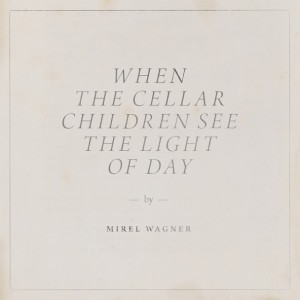It is rare these days to come across a record which stops you in your tracks, and forces you to pay attention to every word, every plucked note, every intentional silence. When the Cellar Children See The Light of Day is one such record; it truly is remarkable, crafted with dedication by 23-year-old Mirel Wagner.
Consisting of just two elements – Wagner and an acoustic guitar – the record harks back to the traditional folk tradition of having nothing to hide behind, save your own songs and the strength of your voice, and it is no coincidence that Wagner oozes quality in both her songwriting and her vocal delivery. When Wagner sings about a small child placed under an Oak Tree, in a state of half-consciousness, slipping in and out of ‘dreams, dreams, dreams, sweet dreams’, each word carries the air of resignation. On ‘Dreamt of a Wave’, the character “dreamt of a wave washing over me…the wave was not water, but flesh and blood and bone”. The repetition of the dream state is something which Wagner uses to paint such evocative and clear imagery in the mind of the listener; inviting the listener to question the lyrics, the stories she has created, and imagine themselves in the role of the characters inhabiting Wagner’s words.
Death is a theme prevalent throughout the record, whether lyrically or in the suffocating instrumentation. It is there in the pauses between words, in the silences, all pointing to the bleak, never-ending darkness Death brings. The ‘deaths’ which Wagner sings about are not all literal deaths, however. In ‘What Love Looks Like’, it is the ‘death’ of a relationship, likewise, in ‘Taller Than Tall Trees’, the ‘death’ is of broken promises and false hope, resulting in the metaphorical ‘death’ of love itself.
The idea of this ‘death’ of love is taken to its extreme conclusion in the final track, ‘Goodnight’, which inverts the traditional lullaby-“Goodnight, Goodnight my darling, I love you”-into a murder scene; “I’ll push down the pillow with all of my might…we’ll be together, forever, now and through time.” In subverting the children’s lullaby, Wagner is playing with the listener’s general assumptions of word in so far that traditional lullaby’s are sung to aid the child to sleep through the night. It is a bleak and harrowing way to end the record.
Wagner is an artist of significant talent, pushing the boundaries of what can be deemed ‘listenable’ through her Gothic tales of death and despair, but when the music is so beautifully haunting, as it is on When the Cellar Children See The Light of Day, the record stops being a collection of 10 tracks to become an integral auditory and visual piece of art.

